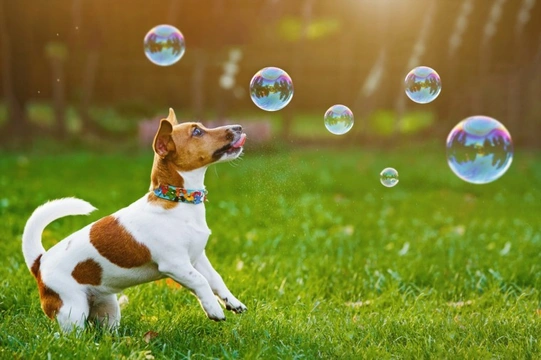
Keeping playtime interesting: Five games to play with your dog other than catching a ball
Some dogs absolutely live to play fetch, and are only happy when they are chasing a ball, or have a ball in their mouth for safekeeping. Other dogs can of course be more take it or leave it about things, but all dogs love to play, and finding the right activity for your dog can take time.
Different types of dogs have different preferences, and keeping playtimes varied and interesting helps to provide mental stimulation to keep your dog on an even keel and well behaved, and gives them an outlet for their energy levels and contributes to their daily exercise requirements.
However, dogs can and will get bored of the same types of games and activities every day, and simply standing repeatedly throwing a ball for your dog over and over might give them a workout, but is likely to become dull and monotonous for you in short order, and potentially your dog too.
With this in mind, this article will look at keeping your dog’s playtime interesting, and share five toys and activities you might want to use to play with your dog other than simply fetch using a ball.
Read on to learn more.
Try a Frisbee
If your dog loves to play catch, retrieve things and do lots of running around but is getting bored of their ball, why not invest in a Frisbee? Frisbees move in a different way to a ball and need to be caught differently too, and they also fly higher, faster and further than balls usually do, which can help to really stretch your dog’s abilities.
Choose a Frisbee that is designed for dogs to ensure that it is safe and appropriate for them, and never throw the Frisbee directly at your dog – rather, throw it past their line of sight so that they can track and pursue it.
Retrieving toys and games
Playing fetch or catch with a ball is of course a type of retrieving game, and if your dog is from an adept retrieving breed like the Labrador or simply loves games of this type, you might want to think about changing things up!
Dogs that are trained to retrieve for working roles are trained in a particular way using special retrieving toys, which are designed in different shapes, sizes and weights, and some of which are designed to float for water retrieving too.
Such toys can be used to fine-tune your dog’s retrieving skills and teach them how to pick up and carry toys with care, as well as providing an additional challenge if hidden or used as part of interactive hide and seek games.
Water games
Not all dogs love the water and some cannot swim, so taking a dip isn’t a good fit for all dogs. However, play and games involving water are often enjoyable for many different types of dogs, and they don’t necessarily have to involve swimming!
Simply getting out a paddling pool on a hot day, filling it a couple of inches and placing toys in it for your dog to bob around for is a great way to provide entertainment and keep your dog cool, and playing with a hosepipe is really rewarding for some dogs too.
Never direct a jet of water at your dog’s face, ensure the water pressure isn’t too high, and don’t pursue your dog if they’re not having fun – but do think about turning your back garden into a temporary water park to switch things up from time to time.
Blowing bubbles
Bubble wands are hugely popular with kids of all ages and many adults too, and they can also serve as a source of great fascination for dogs, who do not understand why they can see the bubbles so clearly but are unable to catch them!
From simple, small bubble bottles that can be bought in most supermarkets to elaborate bubble machines and wands designed to create special effects, bubbles can be fun for your dog and children alike.
Football or rugby for dogs!
Finally, that chewed old tennis ball might have lost its shine for your dog, but this doesn’t mean that a different type of sports balls won’t prove to be hugely entertaining!
Dogs automatically attempt to pick things up with their mouths, but when it comes to footballs, this is outside of their reach, and means that if your dog wants to play, they’re going to need to learn some striker skills with their front paws.
Rugby balls too can be a great toy to use to play with your dog, as they move in an unpredictable way and will be more of a challenge for your dog to pursue and catch and again, they probably won’t be able to grab hold of the ball effectively with their teeth.
Dogs can of course puncture balls of this type if the ball isn’t fully inflated or is starting to weaken with age, so either choose an old ball that you won’t miss if it becomes damaged, or ensure that the ball is fully inflated and kept in good condition to avoid it becoming damaged.



